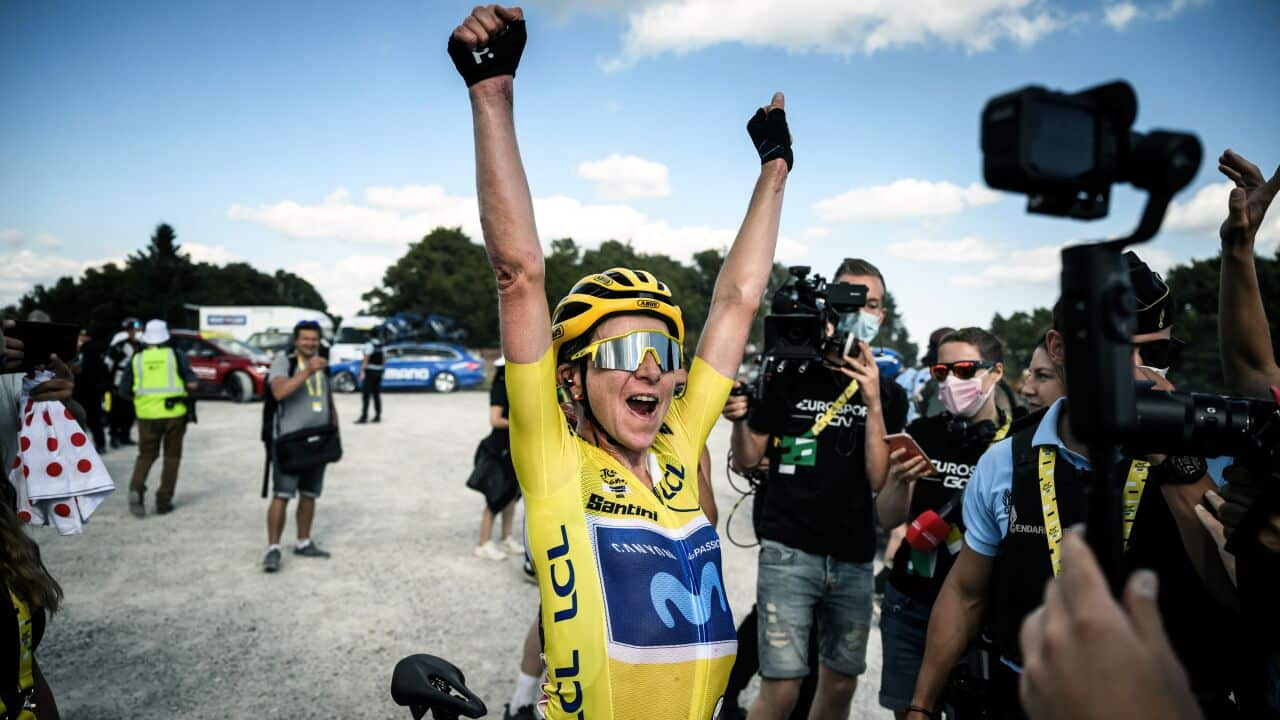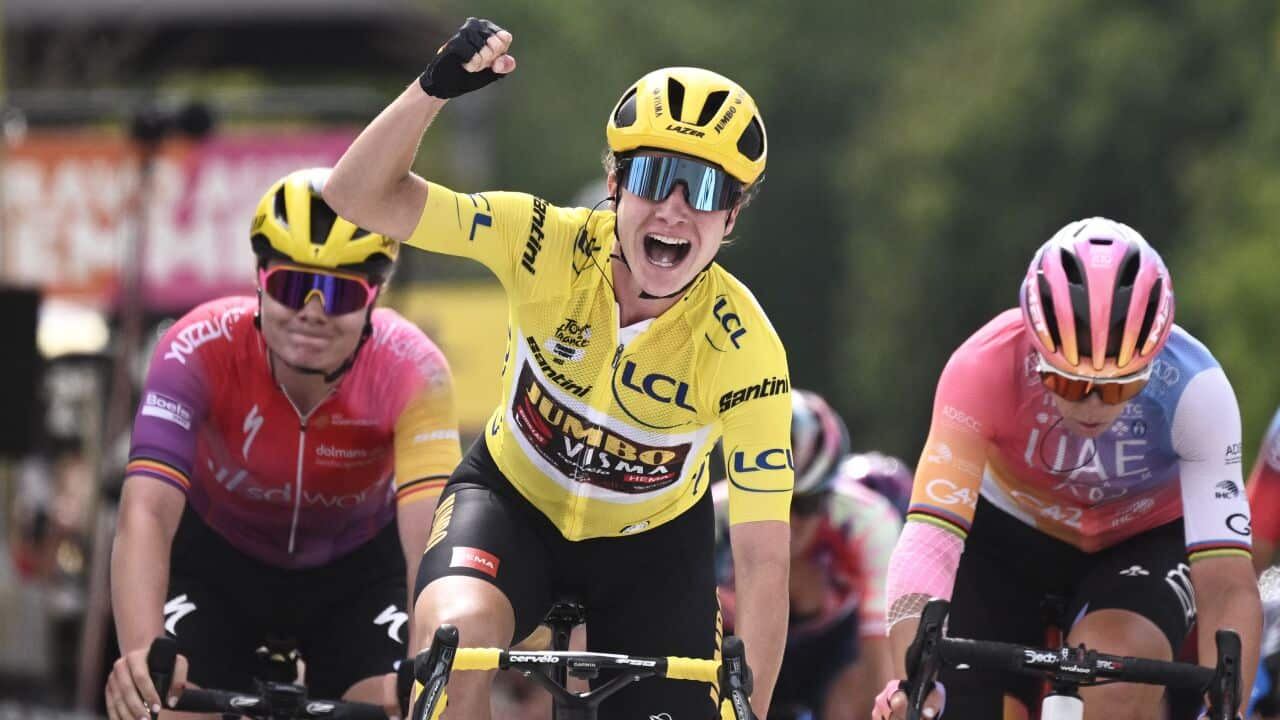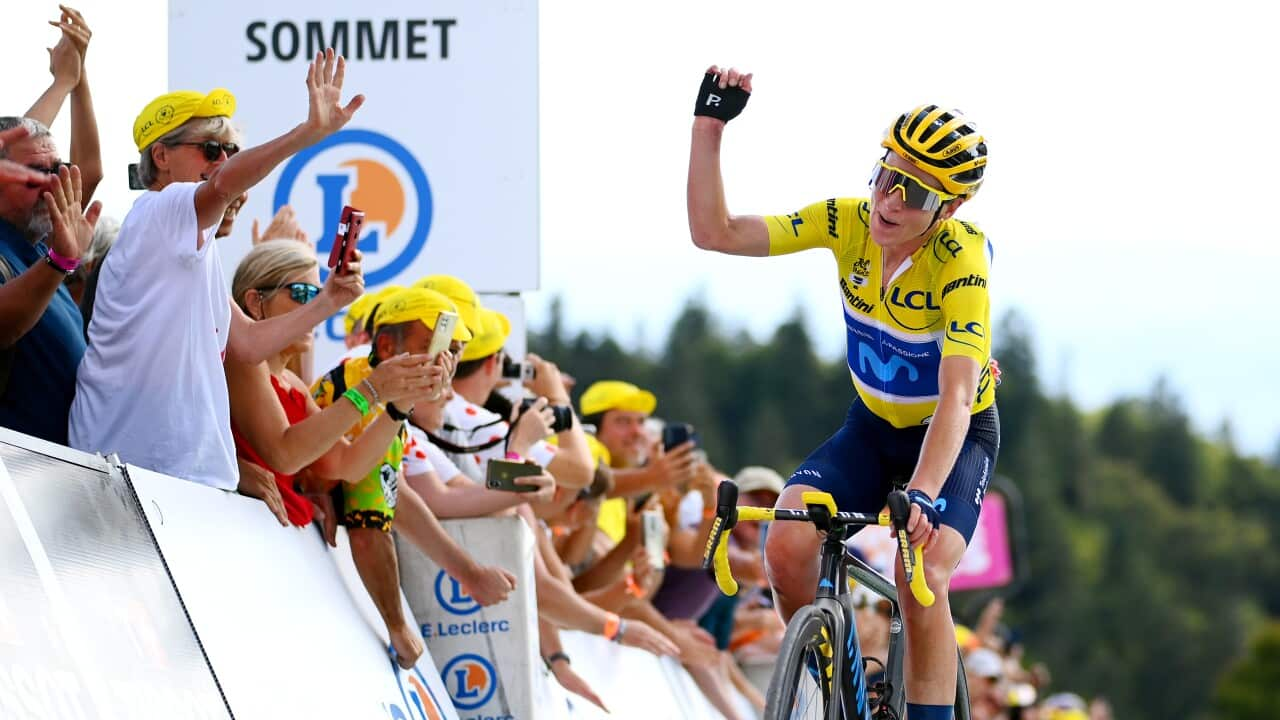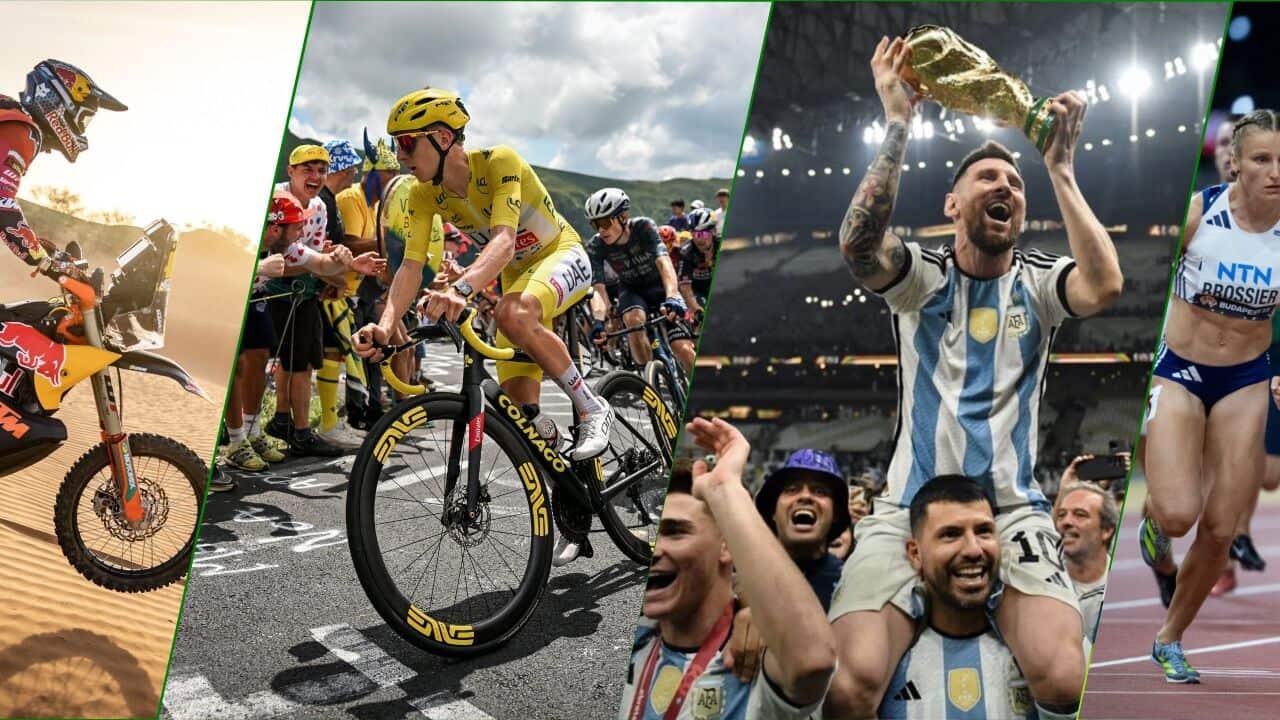Heroes in yellow
It was a landmark moment in cycling, as the inaugural Tour de France Femmes completed a successful first edition atop the Planche des Belles Filles. Annemiek van Vleuten was by far the strongest on the climbs, Lorena Wiebes dominated the flat sprints and Marianne Vos was the best on the days in between.
Between the three of them, they held the yellow jersey throughout the race and it was great to see the world-famous symbol of cycling held by such distinguished members of the sport.
Wiebes is the next generation, a young rider with serious talent who has been the best sprinter in the world these past few seasons.
Vos has a breadth of accomplishments unmatched in cycling and it was very fitting to see her grace the yellow jersey, particularly after her work in establishing La Course, the precursor event to the Tour de France. She has been the humble figurehead of women’s cycling for a over a decade and the sight of her in yellow was a sign that the times of the divide between the men and women at the Tour de France were at an end.
It even inspired Annemiek van Vleuten, who had been a bit on the fence about the Tour de France Femmes in a sense, saying that it was just another race in the build-up, on par with the Giro Donne. That changed sometime in the first six stages.
“Before I said, for me the yellow was something for the guys and I didn’t have the feeling for it,” said van Vleuten. “But then I saw Marianne Vos riding with it, I have to say that it is a nice one and a beautiful present for the victory.”
Van Vleuten was as ecstatic at the finish as she has been with any of her other major successes, scenes reminiscent of her world championships road race win and the Olympic time trial gold.
She has been the best rider in the women’s peloton in recent years, her incredible results on the climbs in particular putting her in same category of many of the greats within the sport. There are few riders better respected than the Dutch woman and for her to win the first yellow jersey provides an impressive benchmark for future Tour de France champions to be judged from.
It felt like ‘the Tour’
The tension, excitement, fans and - dare I say it – crashes, were all very Tour de France. There’s no race like it from that perspective, every rider knows that the eyes of the world are on them, and everyone wants to be up front in the action. Unfortunately 140-odd riders don’t all fit at the front of the race on an eight metre-wide road and when something goes wrong that means that there will be crashes, often big ones with everyone at close quarters.
The top riders in the world took this race very seriously, it looked like everyone was peaking for the event, the times on the climbs were incredibly fast and the competition for every stage was very fierce.
The fans lining the side of the road weren’t up to the Danish crowd levels, and not quite the men’s race, but they were very healthy throughout the race, populating villages and climbs that the race passed through, with the fans flocking out to see the best cyclists in the world plying their trade.
Magic moments
The memories that will live long after 2022 for me include Vos and Van Vleuten winning in yellow, van Vleuten’s comeback from illness to win the race, Uttrup Ludwig's post-race winning interview, the chaos of the gravel stage and the riders rolling out on the Champs-Élysées.
I’ve covered the symbology of those riders in yellow above, but the final winner of yellow was perilously close to quitting the Tour de France due to a stomach bug during the first few stages. She persevered and obviously came back to her dominant best, but to see van Vleuten go from being so vulnerable and getting dropped to winning the whole race ranks as one of her best-ever feats.
If there's a better person for conveying emotion in their interviews, I'd love to see them at the business end of a microphone because Cecilie Uttrup Ludwig is always must-watch television.
The dilemma of whether to include gravel, cobbles, dangerous descents, etc in Grand Tours essentially comes down to questions of fairness, but for spectacle and drama it’s hard to match the unbridled farce of seeing the world’s best bike riders struggling to stay in the race on technical parcours.
The Champs-Élysées is such a hallowed venue of cycling that it was hard to hold back a tear as the riders had the flag drop by Marion Rousse and racing begin on the famous boulevard. Many of the riders had similar reactions, Amanda Spratt’s interview with SBS Sport’s Gracie Elvin at the teams presentation is compulsory viewing for those that haven’t seen it already.
We can’t be complacent
I had the good fortune to get the opportunity to interview some of the greats of Australian cycling in the lead-up to the race. Kathy Watt, Anna Wilson and Tracey Gaudry all raced in editions of the women’s Tour de France or its spin-off events.
I’d of course suggest you go and check out the interviews (two written, one video) for the anecdotes and opinions of some of the top cyclists Australia has produced men’s or women’s. The big takeaway for me though is that we were there back in the 1980s and the event went away into lesser editions after 5 years of being raced, changing name and status to the point where it wasn’t the women’s Tour de France as a hard race for women in France.
The past week has proved that the cachet of the Tour de France is important and that having the women front and centre competing is important for the sport. To that end, we need to keep watching, stay vigilant for things that will threaten the event and work to build interest derived from the women’s race across the cycling season.
Potential for improvement
One of the biggest threat I see is both the perception and the reality of the inequality between the women’s and men’s races. Here at SBS, we’ve done everything that we can to bring the same level of production to the men’s and women’s coverage.
We had the same team on the ground in France and covering the race back in Australia, the same commitment to bring as much of the race as was broadcast to you back at home, provide the same variety of replays and highlights and to bring the stories of the riders to you. Some of that is tricky of course, it’s hard to do as much preview content when the men’s race is in its most-decisive stages and the extension of what was a three-week production to the full month of July makes everything longer and harder on the whole team.
The same is true for the host broadcaster, but the most consistent feedback we heard from the audience was around the live broadcast starting midway through the stage in stark comparison to the men’s blanket coverage.
With the women’s stages already shorter in time and distance, it wouldn’t even need to be a massive increase in the total hours broadcast, and we wouldn’t miss key moments in race history, like Annemiek van Vleuten launching her attack from 85 kilometres to go on the hardest mountain stage.
Add to that questions of prize money and rider salary inequities, and it’s not hard to build a case of inequity when you compare the sport with tennis or other more progressive sports. If that narrative becomes pervasive, then support for the event will diminish, so we need to keep pushing for improvements so that when people ask the tough questions – as they should – that we can point to the ways that cycling is working on improving.
In my interview with Tracey Gaudry, she talked extensively on her time with the UCI and the multiple factors that have gone into and will continue to go into the improvement of women’s cycling. Not everyone can equal Gaudry in the impact that she’s had on the sport, but there’s always something that can be done, whether it’s reaching out at grassroots level, actively engaging with the sport or supporting from home.
One of the most touching moments in recent weeks for me was watching how the cycling community came together to support you Jasmine McGough when she suffered a C-5 spinal injury, with now over $160,000 raised to help with her future needs.
I know of famous cyclists who have donated, but more impressively over 800 individual donors have dug into their pockets to help out one young member of the community. Building a community means more than dollars and numbers of eyeballs, it’s about creating a sense that we’re bigger than a bunch of individuals straining our eyeballs late into the night and part of a whole that is part of a better, more equitable future.



















